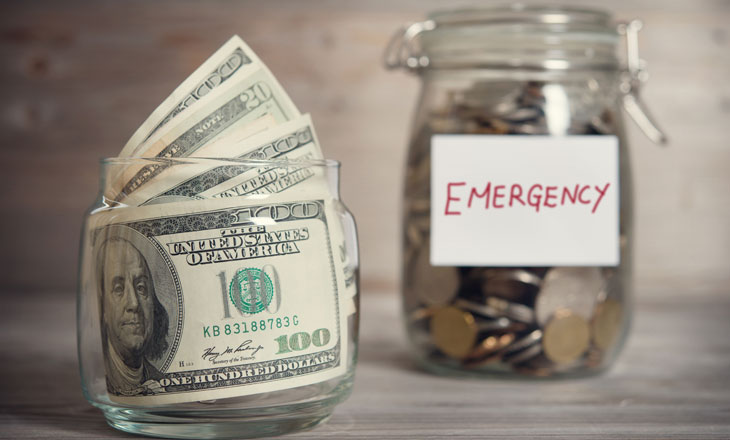How to Create an Emergency Fund for Florida’s Hurricane Season
By: iTHINK Financial | Jun 07, 2019

Most of us are familiar with the concept of emergency savings that can be used to cover unexpected car repairs, medical bills and other necessary expenses. In fact, you may already have a healthy cushion set aside for those situations. However, for those living in areas affected by tropical storms and hurricanes each year, there’s one more emergency fund to consider contributing to—your natural disaster preparedness savings.
With potential to affect a great part of Florida and other eastern states, the 2019 Atlantic hurricane season officially kicked off on June 1 and will last through November 30. If your household doesn’t have a dedicated hurricane emergency fund, keep reading to find out why this cash reserve is so important and how you can build yours starting today.
Why You Need a Hurricane Emergency Fund
Even a tropical storm or Category 1 hurricane can cause extensive damage. Branches may snap off trees and break windows or glass doors. Roof shingles, gutters and siding may come loose. And as wind speeds increase, so does the potential for major damage or even total destruction.
While homeowners’ insurance protects you from taking on the brunt of repair costs, deductibles may still total in the thousands and, without an emergency hurricane fund to cover them, can be just as devastating as the damage itself.
And major damage to your home or properties isn’t the only thing to worry about with hurricanes. Entire institutions may be shut down for safety reasons or lack of power, including roads, schools and places of work. That may mean temporary unemployment for one or more members of your family, putting even more weight on your emergency savings.
How to Build Your Emergency Fund
Assess your needs
The first question you need to answer when building any kind of emergency fund is, “How much do I need to save?” That number will be different depending on where you live, your expenses and how much it would cost to replace your assets. However, experts agree your savings should be able to cover three to six months’ worth of living expenses.
In the case of hurricane preparedness, there may be repairs needed to make your home safe and comfortable again, like replacing your roof. When setting up your emergency savings goals, think about what your deductible will be should your home need major repairs and account that into your savings strategy as well.
Choose an interest-bearing account
As you set up your emergency fund, choosing where to keep your money is a critical step. You’ll want to make sure your savings are accessible and there when you need them, which means a CD or other accounts with withdrawal limits might not be a good option. Instead, look for checking or savings accounts with a high interest rate to maximize your savings. Money market accounts are a great alternative and typically offer tiered interest rates.
Build your savings over time
Setting a lump sum aside as an emergency fund is not feasible for most households. Instead, the better course of action may be to slowly build up your savings over a period of time. For hurricane savings specifically, it’s a good idea to start putting money in your emergency fund as far in advance of June 1 as possible. On the bright side, if there isn’t severe hurricane activity one year, you can carry some or all of your emergency fund over to the next without the need to start over from scratch.
Reevaluate your budget
Before you can begin contributing to your savings, you’ll need to take a look at your budget to determine how much you can save each month. While building your emergency fund is of high priority, that doesn’t mean pushing other financial goals to the wayside. Contributing to your 401k, kids’ college savings and other long-term accounts should remain part of your budget. Instead, look for extra expenses you can cut out temporarily or eliminate for good. Reevaluating unused subscriptions, $5 lattes and impromptu shopping sprees can save you anywhere from $50-$150 or more each month.
Add to your income
If you’ve cut back on unnecessary spending and are still having a hard time making your savings goal, there are a number of ways you can earn extra money each month. From selling gently used clothes to participating in focus groups, a spark of creativity can help you build your hurricane emergency fund faster without putting a strain on your everyday budget.
From checking your stash of non-perishable foods, to stocking up on batteries and water, the best time to prepare for a hurricane is before one is on the forecast. Make a plan to get your household and your finances ready for this hurricane season and protect what’s important from any upcoming storms.




